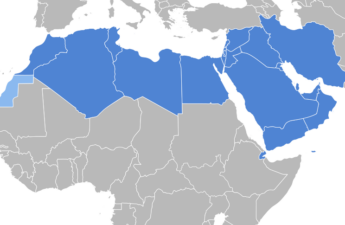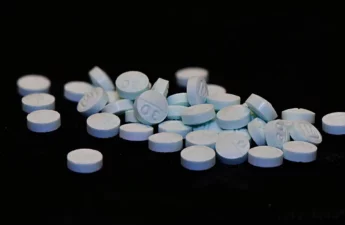
By Michael Ollove, Stateline
In a departure from usual practice, federal and state governments are handing out the scarce therapeutic drugs that treat COVID-19, deciding where they will go and in what amounts.
Typically, pharmacies or health care facilities order what they need directly from drug manufacturers. But two possibly lifesaving monoclonal antibody treatments and two antiviral oral pills have been in short supply during the omicron-fueled surge, prompting a different approach.
Early in the pandemic, states competed for the limited supply of ventilators, personal protective equipment and tests in a chaotic free-for-all. To avoid a repeat, the federal government is buying millions of doses of the COVID-19 therapeutic medications and allocating those to states, which in turn distribute them to pharmacies or hospitals.
In many places, what is arriving is far less than the need. “The demand for any of these products is higher than the supply that is available,” Dr. Raymund Razonable, an infectious disease specialist at the Mayo Clinic in Minnesota, told Stateline late last month.
Razonable said the Mayo Clinic had run out of monoclonal treatments the previous weekend. The treatments introduce laboratory-created antibodies into the bloodstream to neutralize the virus. The oral antivirals prevent replication if the virus does enter the cells.
The hospital had received enough monoclonal treatment doses for 30 patients that week, he said. “We had identified 190 people who were eligible for it. We consumed it all in a day. That’s how limited it is.”
Until last month, two other monoclonal antibody treatments also were in the mix. But the U.S. Food and Drug Administration in January withdrew approval of those drugs for treatment of patients with the omicron variant. The agency determined those two treatments are ineffective against omicron, which now accounts for nearly all U.S. COVID-19 cases.
One COVID-19 treatment, the antiviral drug remdesivir, is now plentiful enough that the federal government allows medical providers to acquire it directly from manufacturers. Former President Donald Trump received remdesivir when he fell ill with the virus in October 2020. The drug, like the monoclonal antibody treatment sotrovimab, is administered by infusion. Sotrovimab requires just one treatment, but remdesivir must be administered through infusions on three consecutive days.
Otherwise, COVID-19 treatments are being handled by federal officials and the states. According to the U.S. Department of Health and Human Services, the federal government distributed just shy of 630,000 courses of treatment of the various drugs during the week of Jan. 24, with most going to the states, Washington, D.C., and U.S. territories. Supplies also go to the Department of Defense, the Veterans Health Administration, Immigration and Customs Enforcement, the Indian Health Service and the federal Bureau of Prisons.
The monoclonal treatments are delivered every week; the oral antivirals every other week.
At the Mayo Clinic, there’s no telling how much the hospital will receive week to week, said Razonable. “It would be great if there was some consistency so we could plan ahead and not have to react to changes every week.”
In other places, such as Maryland, where the omicron surge has ebbed in recent weeks, there is now enough medication to go around, said Dr. Howard Haft, senior medical adviser to the Maryland Department of Health.
“I would say at the peak of omicron, it was probably very challenging or impossible to meet the demand,” Haft said, but with the surge losing steam in Maryland, most patients referred for those treatments are able to receive them.
Avoiding Worst Outcomes
Getting vaccinated against COVID-19 is the surest way to avoid dying from it, but medications also can play an important role in helping people avoid the worst outcomes of the disease. If the world fails to eradicate COVID-19, which seems likely, therapeutics will become an increasingly vital part of the arsenal against it, experts say.
“Access to this medication can prevent you from requiring hospitalization and dying,” said Dr. Greg Schrank, an epidemiologist at the University of Maryland Medical Center.
Of the drugs now in use, only remdesivir has received final FDA approval. The agency has granted all the others emergency authorizations while the process for final approval continues. That has been the path for the COVID-19 vaccines as well.
The two monoclonal treatments that are available are not meant for the same patients.
Sotrovimab is intended for patients in the early stages of the disease who have mild symptoms. That is also true of the two oral antiviral pills, paxlovid and molnupiravir.
Doctors choose which medication to prescribe based on patients’ underlying health conditions and how the medicines might interact with other drugs they take. Dr. Lindsay Ann Petty, an infectious disease doctor at Michigan Health at the University of Michigan, said she also considers the availability of the COVID-19 medicines and whether a patient can get to an infusion center or pharmacy that carries the drug.
Florida Republican Gov. Ron DeSantis recently rebuked the Biden administration for withdrawing approval for the monoclonal treatments the FDA found ineffective against omicron.
DeSantis, a likely GOP presidential candidate who has criticized other Biden administration COVID-19 policies, claimed to have anecdotal evidence that Florida patients infected with omicron benefited from the treatments before they were withdrawn.
“People have a right to access these treatments, and to revoke it on this basis is just fundamentally wrong, and we’re going to fight back,” DeSantis said at a news conference last month.
In response, White House press secretary Jen Psaki said it made no sense for DeSantis and others to advocate for those drugs. “Let’s just take a step back here to realize how crazy this is,” she said. “They are still advocating for treatments that don’t work.”
A second monoclonal antibody treatment, evusheld, is still available. It is intended for people who have not been infected with COVID-19 but are either severely immunocompromised or for some reason—perhaps allergies—cannot be vaccinated. It is delivered through injections.
A tricky matter pertaining to all the other COVID-19 treatments is that to be effective, they must be given within the first days of the onset of symptoms. And that depends on the ready availability of timely testing.
“It assumes that not only people have access to testing nearby but that results can be turned around in a reasonable time frame,” said Schrank of the University of Maryland Medical Center.
Who Gets Priority?
The government’s role in the allocation and distribution of drugs is unusual, but not unprecedented. It is how the COVID-19 vaccines were handled in late 2020 and early 2021, when they first became available but were still in short supply.
And the federal government has previously handled the distribution of some drugs to the states, including those designed to be used in case of a biochemical attack. But those were on a relatively small scale.
With the distribution of millions of doses of COVID-19 therapeutics, “it’s a different trip,” said Haft, the adviser to the Maryland Department of Health. “It’s like a medical countermeasure on steroids.”
The federal government distributes the therapeutics to states based on their populations, except for the sotrovimab monoclonal treatment, which it hands out based on cases and hospitalization rates.
It is up to the states to determine exactly where the drugs are sent. The monoclonals go to hospitals and other medical facilities that can administer infusions. The oral antivirals are distributed to select pharmacies.
Initially, Maryland sent most of its allocation to Walgreen’s pharmacies because they were located throughout the state and provided home delivery and drive-thru services, Haft said. Now the state is beginning to distribute the therapeutics more widely.
Maryland and some other states maintain websites to advise medical providers daily on where supplies are available. The federal Department of Health and Human Services maintains similar sites.
Some states say they are making efforts to ensure the drugs are accessible to minority populations and rural residents.
States advise providers to prioritize patients at the highest risk for the worst outcomes from COVID-19. At the top of the list: people with other serious underlying conditions, such as lung and heart disease, cancer and diabetes. Older people who are not vaccinated also should get priority, according to the National Institutes of Health, because they are at increased risk of hospitalization and death.
But in many places, there isn’t enough medication to treat all the qualifying patients, said Dr. Marcus Plescia, chief medical officer at the Association of State and Territorial Health Officials.
“The supply now is so limited that setting priorities in many places is futile,” Plescia said. “When there is a more robust supply, but still not enough, then thinking through the priorities will be a little more useful.”
For many patients, he said, it’s just a matter of being in the right place at the right time.
Stateline, an initiative of The Pew Charitable Trusts.


